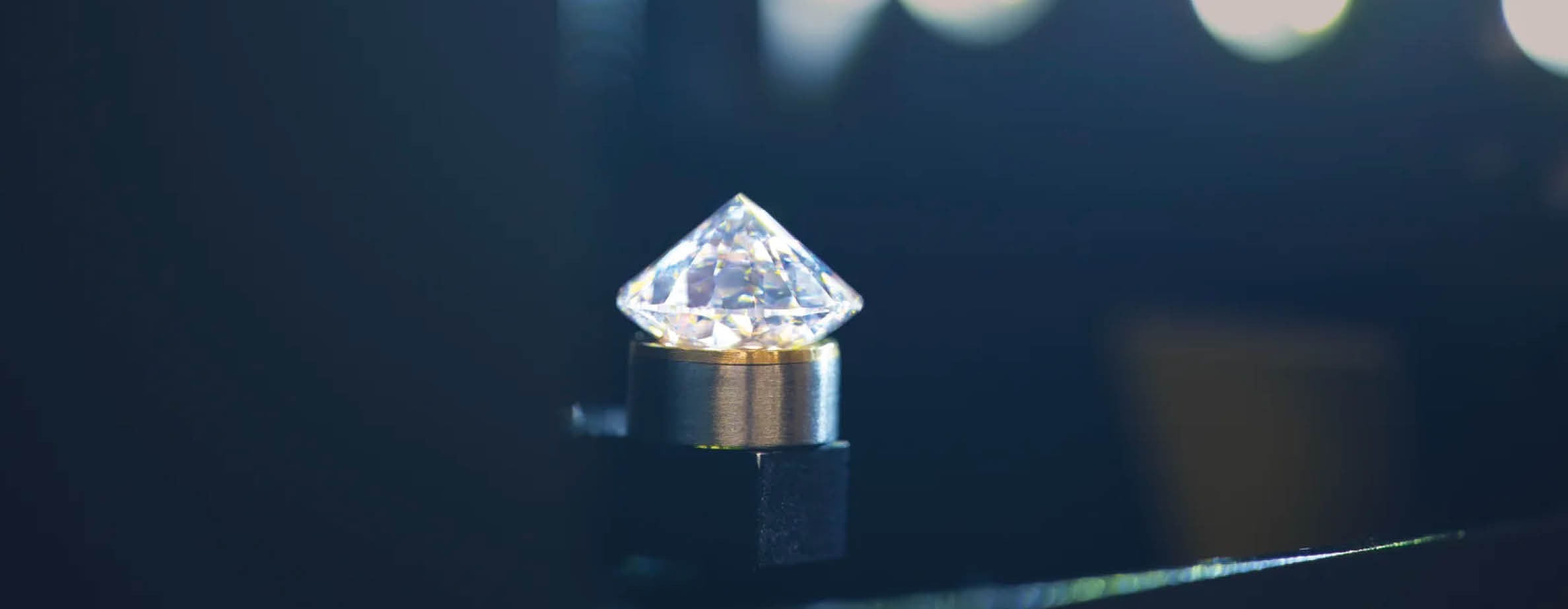An extremely rare diamond made international headlines for Stuller recently due to our team’s expertise and dedication to diamond screening. GIA (Gemological Institute of America®) published an article written by Senior Gemologist Guy Borenstein and Diamond and Gemstones Procurement Specialist Sean Oneal in the Summer 2021 edition of their quarterly journal, Gems & Gemology that details this incredible find.
Guy Borenstein supervises the screening operations in all Stuller departments and locations, including the Stuller Gemological Lab™, which provides a second, more in-depth analysis for the referrals.
A Rare Find
A natural round brilliant loose diamond was submitted by a customer to our CAD/CAM department for setting in a custom design. As part of our intake process, every diamond that enters our facility is thoroughly checked and screened to confirm whether it is natural or lab-grown.
When the diamond was screened by our CAD/CAM team, they received conflicting results. One screener pointed to this being a natural diamond, while the other screener indicated that it was a lab-grown diamond. It was then forwarded to the Stuller Gemological Lab™ for further testing and clarification.
As it turns out, this rare find was a mixed type IaB-IIb diamond with a long-lasting phosphorescence. It is a colorless diamond, and looking at it with the naked eye, you wouldn’t realize how unique it truly is.
Under ultraviolet light, the scientific data revealed phosphorescence that lasted for more than 120 seconds. If natural diamonds do have phosphorescence, it usually lasts for a few seconds.
Once Guy saw this result, the team used an FTIR spectrometer that revealed this was indeed a unique, rare natural diamond.
How Rare Is It?
So, how rare exactly is this natural diamond? Guy has worked for 15 years in gemological laboratories and examined thousands of stones every month, and he has never come across a diamond with properties like this before.
The publication of this discovery in Gems & Gemology underscores that this is something new.
Comprehensive Diamond Screening Protocols
The diamond screening process is an evolving subject that changes due to new advancements in technology, and Stuller stays up-to-date with all the developments.
“This case demonstrates that you cannot rely only on one screening technology,” says Guy. “You always need at least to have another one of a different technology to make sure that you are fully covered. Our tools department offers such technologies.”
By incorporating comprehensive diamond screening protocols, Stuller gives our customers the ability to purchase with confidence and security and know that you are getting exactly what was ordered.
See the article in GIA’s Gem News International:
Rare Mixed Type IaB-IIb Diamond with a Long-Lasting Phosphorescence




